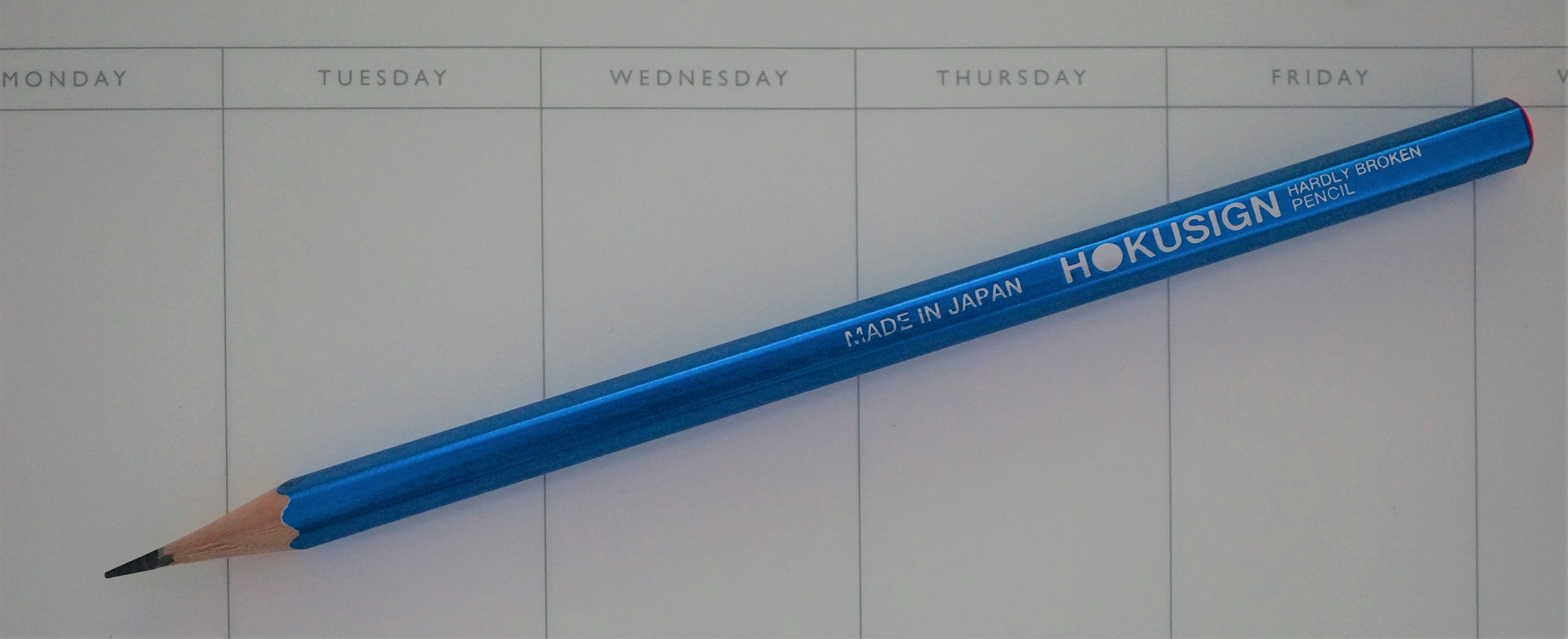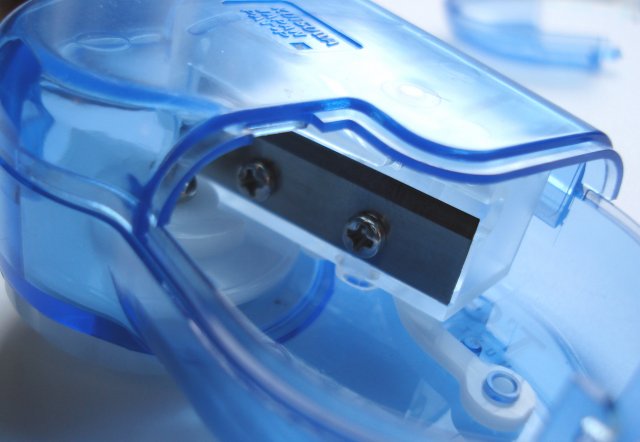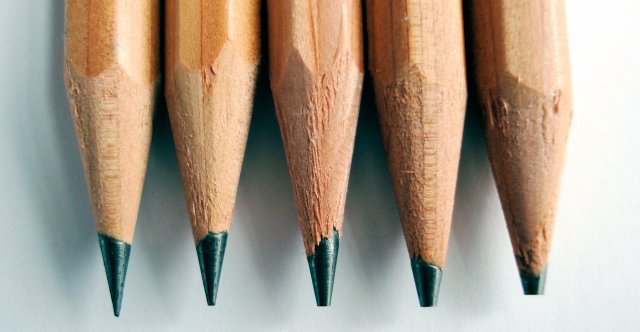
Please allow me to mention a pencil that I’ve been enjoying. The Kutsuwa Hokusign has a strikingly rich and glossy finish (which I don’t like) and a phenomenal next level graphite core (which I do like).
Introduced to the market in 2019 by Japanese stationery producer Kutsuwa, the pencil is aimed at the art market. It is being marketed as being “twice as strong.” I think this claim could be true.
The pencil is made in Japan, and the wood appears to be cedar. A close look at the construction reveals some small flaws. It sharpens very nicely in the Möbius + Ruppert Pollux.
The imprint says, “Made in Japan Hokusign Hardly Broken Pencil.” Does HB mean “Hardly Broken”? It may be the case, though the grade is stamped on the cap. The pencil also comes in B, 2B, 3B, and 4B.
My dislike of the pencil’s finish is not a unanimous opinion – it won a 2019 Good Design Award.
Buntobi, via translation, says the colour is “Hokusai Blue”, used by Ukiyo-e artist Katsushika Hokusai. If I understand correctly, this makes the pencil name a pun.
What makes this pencil very special is that the lead is smooth and dark, glides well, and doesn’t break. There is even more – the lead lasts quite long without dulling, making the pencil a very good value. How is this possible? This pencil presumably uses a polymer core, rather than a standard ceramic core.
The Hokusign is highly recommended.
Links:
The official product page (in Japanese)
A source, after Japan Post resumes full international service.









